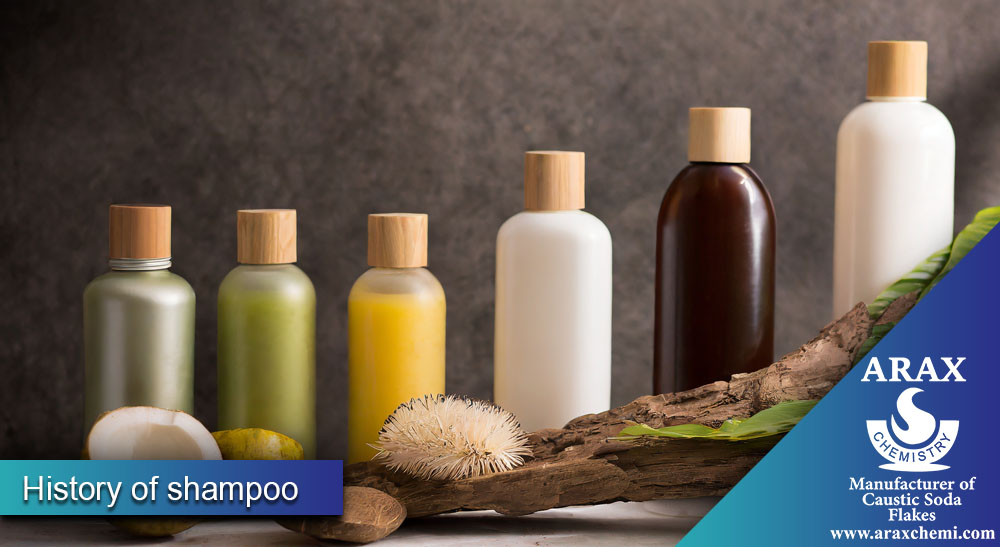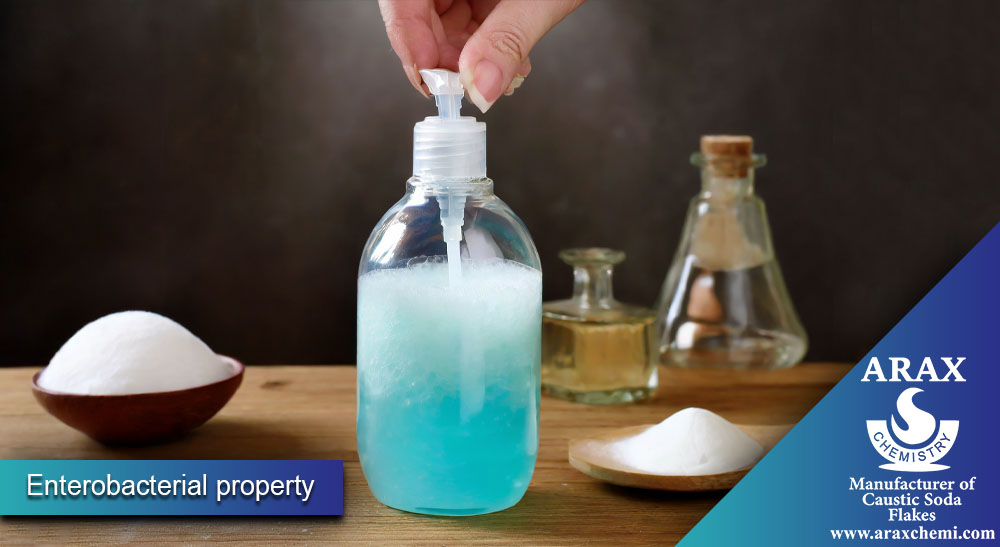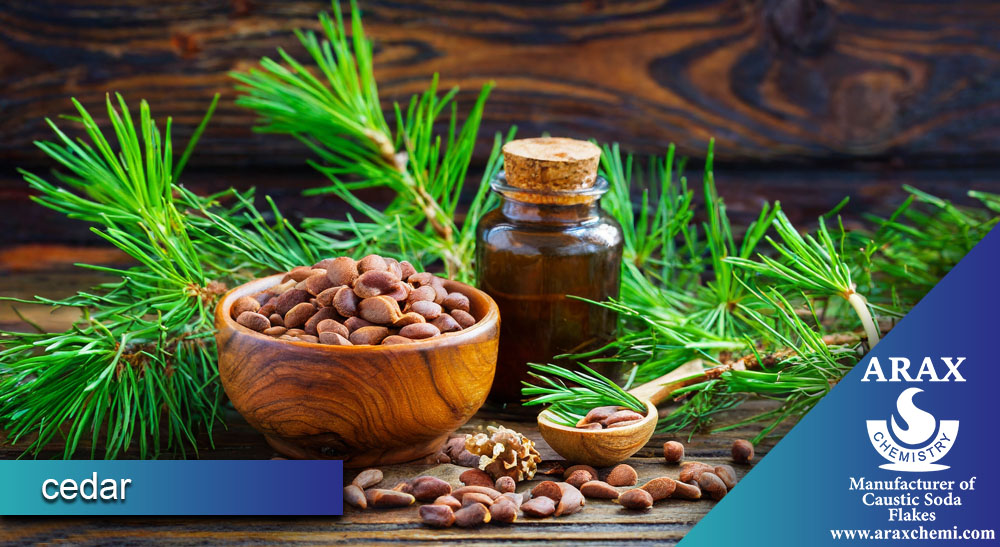Caustic soda in shampoo
Shampoos are anionic synthetic cleansers. The right shampoo does not leave an adverse effect after cleaning the skin and hair and makes the hair shiny. Also, the hair is easily rinsed and combed. In addition, a good shampoo makes the fat of the hair disappear and the electric charge does not accumulate in it (that is, the hair does not rise in the air when combing), and the shampoo should not cause irritation to the eyes and skin.As a strong alkaline chemical, caustic soda has many uses in detergents. Caustic soda is also used in shampoo, but the consumption amount of this substance has a certain standard. In this article, we will review the use of caustic soda in shampoo, stay with us.
What is shampoo?
Shampoo is a health product that is used to wash the hair and clean the scalp. This product is usually available in liquid or gel form and by pouring it on the hair and scalp, it temporarily removes dirt, grease, pollution and other substances from the hair and scalp.
Shampoos have different ingredients that include detergents, moisturizers, fragrances, softeners, and hair protectors. Also, some shampoos may have special ingredients that are suitable for specific problems such as dandruff, hair loss or colored hair. After shampooing, moisturizing products such as balms or hair creams are usually used to keep the hair soft and moisturized.
It is important to know that to choose the right shampoo, hair type, scalp condition, hair problems and personal needs are important. And so that your hair does not get into trouble, you should consider them. Also, reading the product label and knowing the ingredients used in the shampoo can help you make a better choice.
History of shampoo
The history of shampoo goes back to a very old age. This health product, which is used to wash hair and clean the scalp, has evolved and experienced changes over time. In the past, people used different substances to wash their hair. In the past centuries, hair washing was done using substances such as soap, herbal mixtures and even plant ashes. But the origin of shampoo, meaning a product made specifically for washing hair, goes back to the 19th century. In the late 19th century, shampoos were produced using chemicals such as ammonium lauryl sulfate soap. This chemical caused the production of foam and bubbles in the shampoo and was a strong cleaner. During this period, shampoos were mostly used by hairdressers.

In 1930, Procter & Gamble introduced a shampoo called Dreft, which was suitable for washing children’s hair. This product was later introduced into the market for general consumption and became a great success.
Properties of shampoo on hair and skin
Caustic soda is a chemical compound. In some cases, this compound can be used as a substance with special properties on hair and skin, but it should be used carefully and with the necessary precautions. Below I mention some properties of caustic soda for hair and skin:
pH adjustment: Caustic soda can be used as a pH adjusting ingredient in skin and hair care products. By adjusting the correct pH, the acidity or alkalinity of the product can be controlled and maintain the natural pH balance of the skin and hair.
Antibacterial properties: Caustic soda as a disinfectant and antibacterial agent can be used in skin and hair care products. This property can help control the growth of bacteria and microorganisms in the skin and hair.

Antifungal properties: caustic soda can be used as an antifungal agent in skin and hair care products. Its anti-fungal properties can help control the growth of various fungi that may exist on the skin and hair.
Fat absorbing properties: Caustic soda can be used as a fat absorbing agent in hair care products. This property can help absorb excess fat in the hair and make the hair cleaner.
Important points of using caustic soda in shampoo
Caustic soda is a strong substance and its improper use can damage the skin and hair. Before using caustic soda in skin and hair care products, it is better to consult a doctor or specialist to make sure that its use is suitable for your hair and skin and without unwanted side effects.
Before using any product that contains caustic soda, you should dilute it and, if possible, test the caustic soda on a small area of skin to ensure that no allergic reaction or irritation occurs. Never use Perk directly on the skin or hair without diluting it, because it can cause serious damage to the skin and hair and even burns.
Also, if any irritation, inflammation, itching or burning occurs due to the use of products containing caustic soda, stop using immediately and see a doctor or dermatologist if necessary.
Application of caustic soda in shampoo

Caustic soda is a chemical compound commonly used as an active ingredient in skin and hair care products. Below I mention some uses of caustic soda in shampoo:
- Scalp treatment: caustic soda is considered as an anti-fungal and anti-inflammatory agent, which in shampoos containing caustic soda, this combination can help control the growth of fungi in the hair. Also, its anti-inflammatory properties can reduce the symptoms of irritation and itching associated with the crust.
- Controlling fat secretion: caustic soda can be used as a fat absorbent in shampoos. This property can help absorb excess fat in the scalp and help regulate the secretion of scalp fat. This can lead to reduction of fat and improvement of hair strength.
- Relief of scalp inflammation: The anti-inflammatory property of caustic soda can be effective in reducing inflammation and soothing the scalp. This feature can be useful in cases such as inflammation of the scalp, itching and skin irritations that may be caused due to sensitivity or skin damage.
- Enhancing hair growth: Caustic soda can be used as a nourishing and strengthening ingredient in shampoos. It can help stimulate hair growth and increase their thickness and give hair more strength and volume.
- Antibacterial: Caustic soda has antibacterial properties and can be effective in controlling the growth of bacteria on the scalp and preventing infections related to them.
Shampoo ingredients
- Cleansing agent: The cleaning agent in shampoo separates pus particles and reduces fat from the hair surface. This agent can include anionic surfactants (such as sodium lauryl ether sulfate and triethanolamine sulfate), amphoteric substances (such as thel betaine cocoamidopropyl) and nonionic substances.
- Foam strengthening agent: Foam strengthening agent (such as betaine) creates thick and resistant foam. This foam can help to clean and separate pus particles in the scalp.
- Hair styling agent: Hair styling agent makes the hair easy to comb and does not rise in the air when combing.
- Preserving agent: The hair preserving agent consists of disinfectants and germicides. This factor helps the hair stay clean and healthy for a long time.
Each shampoo may contain a combination of these factors and use different combinations depending on the needs and characteristics of the hair. Reading the product label and knowing the ingredients in the shampoo can help you choose the right shampoo for your hair.
Chemical formula of shampoo

Most shampoos actually have similar formulations that include (Sodium Lauryl Ether Sulfate) (Triethanolamine Lauryl Sulfate). These compounds are superficial and play an important role in rinsing consumption and undesirable substances from hair and scalp.
However, dermatologists and hair specialists believe that the type of shampoo does not have a direct effect on reducing hair loss or hair loss. Factors that are part of the treatment in reducing hair loss and water loss include healthy eating, stress management, hair and scalp care, and if necessary, medical advice and the use of special medications and treatments.
Considering the most important psychological factors in attracting customers, some brands can use methods such as adding pleasant aromas, using various colors, and the shape and form of a shell to attract customers. But in fact, the effectiveness and performance of a shampoo can depend more on its internal ingredients and how to use it. Therefore, to choose the right shampoo for your needs, you can choose the shampoos that bring the best results according to your hair type and existing problems. Also, consultation with a dermatologist can help you.
Color agent and hair
Henna: Henna is actually a plant whose leaves are used to dye hair and skin. Henna has antimicrobial and antifungal properties and may be useful as a skin treatment in some cases. But it should be noted that to use henna as a skin treatment or any other natural product, consulting a specialist doctor or dermatologist can be helpful.
Banoni: Banoni is a medicinal plant that is used in some shampoos and hair care products. Banoni has antimicrobial and antifungal properties and may help strengthen and improve hair. Also, using products containing banoni may cause a golden effect in the hair. However, as with other ingredients, it is recommended to seek the advice and guidance of a medical professional or dermatologist for effective and safe use of banoni in hair products.
Cedar: Cedar is also a medicinal plant that is used in some shampoos and hair care products. Cedar has the property of strengthening hair and eliminating dandruff. Also, cedar has antiseptic properties and may increase resistance to skin infections. The use of products containing cedar also requires guidance and advice from a specialist doctor or dermatologist.

(Ketoconazole) is an antifungal drug that is used as an active ingredient in some shampoos. This substance specifically affects fungi and is useful for treating skin problems caused by fungal infections, especially in areas such as the scalp and hair. Using a shampoo that contains catira may help control dandruff, dry scalp, and similar problems.
Types of shampoo based on hair type
Shampoos are generally divided into three categories based on hair type: oily, normal and dry. Each of these categories has its own needs and different shampoos are designed to suit them. Shampoo for oily hair should have more cleaning power and less oil. These types of shampoos effectively remove excess oil and grease from oily hair and give a clean and cool feeling to the hair and scalp. Usually, these shampoos contain various ingredients such as anti-fat and anti-bacterial plant extracts such as mint, avocado and aloe vera.
Shampoo for dry hair has some softening and moisturizing to prevent hair dryness and brittleness. These types of shampoos contain moisturizing extracts such as argan oil, honey and hair proteins that nourish and condition the hair and make them soft and smooth.
For normal hair that is neither too oily nor dry, you can use balanced shampoos. These shampoos have a combination of cleansing and softening ingredients that add volume and softness to the hair and help balance their moisture.
According to the needs of oily, normal and dry hair, it is recommended to wash oily hair every day, normal hair every other day and dry hair every two to three days. This keeps the moisture balance and cleanliness of the hair and makes it look better.
last word
Shampoos consist of multiple ingredients that include cleaning agents, strengthening agents, hair conditioners, and hair maintenance agents. Different types of shampoo are developed based on the type of hair (oily, normal, dry). Each type of hair needs its own ingredients. Shampoos may contain extracts and natural ingredients such as henna, banoni, and cedar that may help nourish and improve hair properties. Katira alone does not strengthen the hair and may be additionally added to the products. To choose the best shampoo, it is recommended to know the needs of the hair and consult with a dermatologist and hair specialist.Arax Chemical Company is one of the most reliable companies producing caustic soda. Arax Chemical Industrial Group supplies its products with the best quality and competitive price to domestic and foreign markets.
